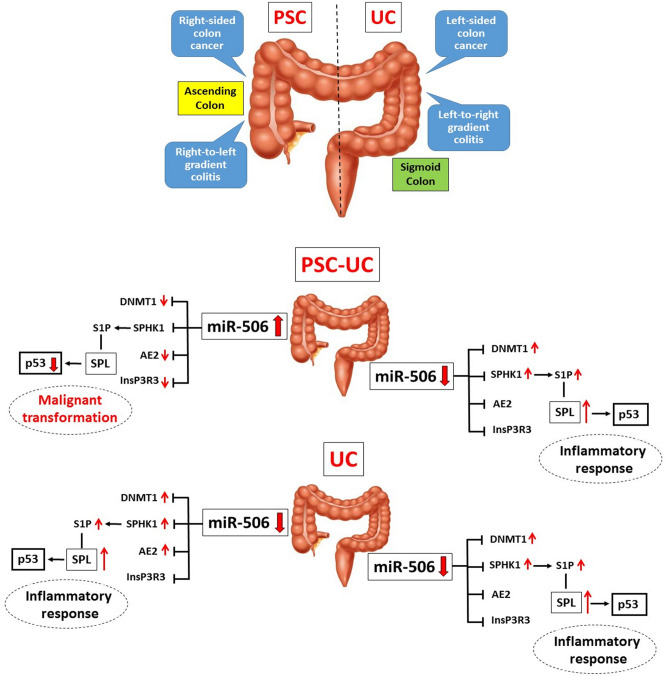Figure 6.
Schematic figure showing the possible contribution of miR-506 to phenotypic presentation of colitis in patients with PSC + UC compared to those with UC alone. MicroRNA-506 expression was upregulated in ascending colons of patients with primary sclerosing cholangitis and concurrent ulcerative colitis (PSC + UC). This overexpression of miR-506 resulted in reduced expression of anion exchange protein 2 (AE2) and inositol-1,4,5-trisphosphate-receptor (InsP3R3), which destabilized protection against toxic bile acids. The lack of sphingosine-kinase-1 (SPHK1) induction in the face of increased inflammation in this part of the colon, as well as the loss of sphingosine-1-phosphate lyase (SPL) activity, promoted neoplastic transformation via a p53-dependent pathway. In contrast, colonic suppression of miR-506 in both parts of UC patient colons, and in the sigmoid colons of PSC + UC patients, was accompanied by a substantial increase in SPHK1 expression. The enhanced levels of kinase SPHK1 resulted in upregulation of bioactive sphingosine-1-phosphate (S1P) which led to further activation of S1P-dependent signaling pathways. The net effect of these responses is severe inflammation. S1P is continuously and irreversibly degraded by the SPL enzyme, which is abundantly expressed in enterocytes, protecting from colitis-associated cancer.

